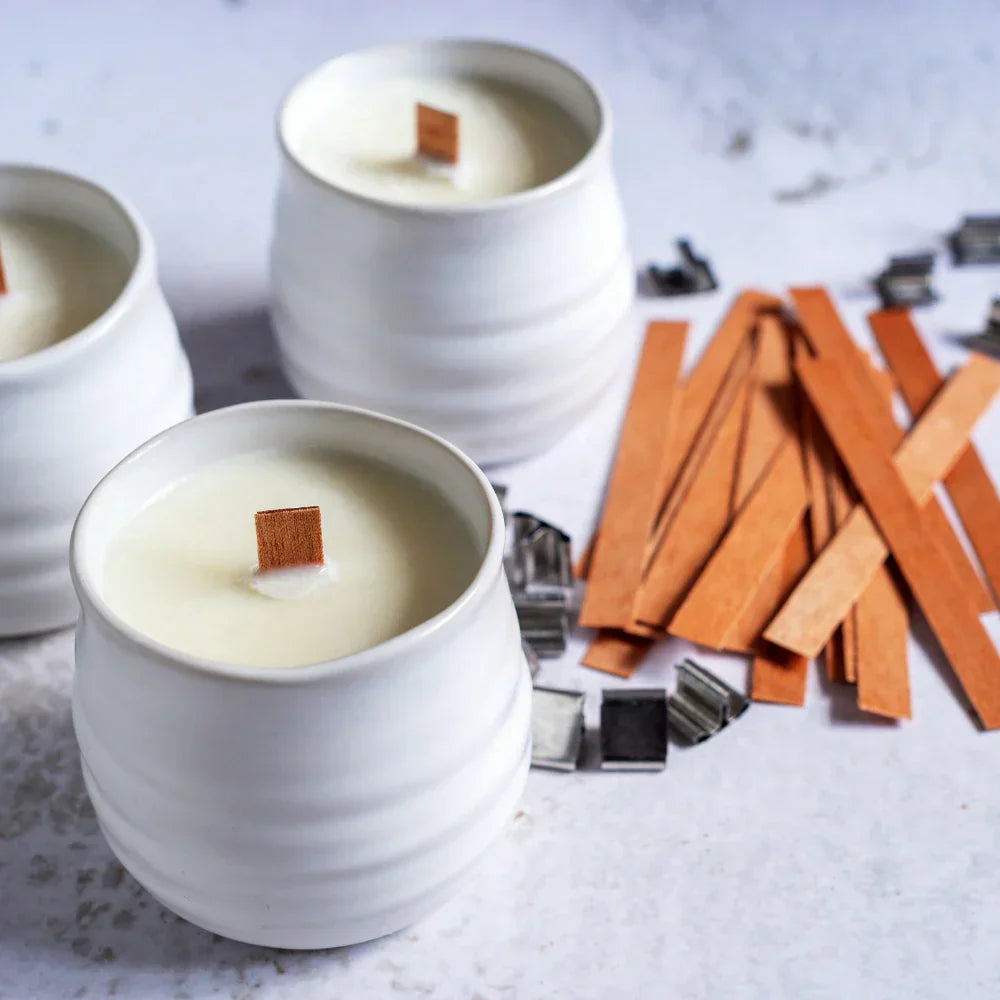
The Illuminating History of Candle Making: From Ancient Light to Modern Craft
Share
Candle Making Through the Ages: Tradition and Transformation
Before electricity brightened every corner of our lives, candles were the primary source of portable light for centuries. Today, they’re cherished for ambiance, aroma, and decoration, but behind their gentle glow lies a long, fascinating history.
From ancient rituals to artisan trends, candle making has evolved across cultures and centuries. Let’s take a journey through time and discover how a humble source of light became a symbol of warmth, celebration, and even luxury.

Early Origins: Light in the Darkness
The earliest forms of candles date back over 5,000 years. Though early humans didn't use candles exactly as we know them today, they did create similar sources of light.
Ancient Egypt
The Egyptians are believed to have developed the first rudimentary torches, rushlights, made by soaking reeds in melted animal fat. These didn’t have a wick, but they were a step toward candle development.
Ancient Rome
The Romans are credited with inventing the true wicked candle. Around 500 BCE, they made candles from tallow (rendered animal fat), using rolled papyrus as the wick. These were commonly used in temples, homes, and military encampments.
The Middle Ages: Tallow vs. Beeswax
During medieval times, candle making became a recognized trade in Europe.
Tallow Candles
Most people used tallow candles because they were cheap and easy to produce. But they had a downside, they smelled bad when burned and produced a lot of smoke.
Beeswax Candles
Beeswax was a cleaner-burning alternative, emitting a pleasant, natural aroma and little smoke. However, they were expensive, so they were mostly used in churches, monasteries, and the homes of the wealthy.
This era also saw the rise of chandlers, candle makers who often worked out of their homes or shops and sold directly to the public or religious institutions.

Colonial America: Nature’s Alternatives
In the 18th century, American colonists discovered that boiling the berries of the bayberry shrub produced a clean-burning wax. While the process was labour-intensive (it took many berries to make a single candle), it offered a sweet, natural scent and a more sustainable alternative to tallow.
Unfortunately, bayberry wax never became mainstream due to its low yield and high labour cost.
19th Century: Industrial Advancements
The 1800s brought significant innovations that transformed candle making from a manual craft into a modern industry.
Stearin Wax
In the 1820s, stearin wax, derived from animal fats, was introduced in France. It was harder and burned longer than both tallow and beeswax.
Paraffin Wax
By the 1850s, scientists learned how to efficiently extract paraffin wax from petroleum. Paraffin was:
-
Clean-burning
-
Odourless
-
Inexpensive
It quickly became the most popular candle material, especially after the invention of braided cotton wicks that allowed candles to burn more evenly.
With the invention of the light bulb in 1879, candle making declined as a necessity but started to evolve into a form of art and luxury.
20th & 21st Century: From Necessity to Nostalgia
As electricity became widespread, candles lost their role as a primary light source, but they gained a new identity.

Decorative & Scented Candles
By the mid-20th century, candles were marketed for aesthetics, relaxation, and home décor. The 1990s saw a boom in scented candles, using essential oils and synthetic fragrances to enhance ambiance.
Artisan & DIY Culture
In recent years, there's been a resurgence in handmade and eco-conscious candle making. Soy wax, coconut wax, and beeswax are now popular for their cleaner burn and sustainability. Home candle-making kits have become a favourite for crafters and entrepreneurs alike.

The Symbolism of Candles Through Time
Throughout history, candles have symbolized:
-
Hope and guidance (used in vigils and religious ceremonies)
-
Celebration (birthday candles, holiday traditions)
-
Remembrance (memorials, spiritual offerings)
-
Romance and peace (soft, ambient lighting in intimate settings)
Their glow is more than just light, it’s meaningful, emotional, and timeless.
From ancient oil-drenched reeds to artisan soy candles in luxury jars, the journey of candle making is as rich as it is radiant. What once illuminated empires now fills our homes with warmth, comfort, and scent.
Whether you’re lighting a candle for relaxation, ritual, or romance, you’re tapping into a human tradition that spans millennia.
